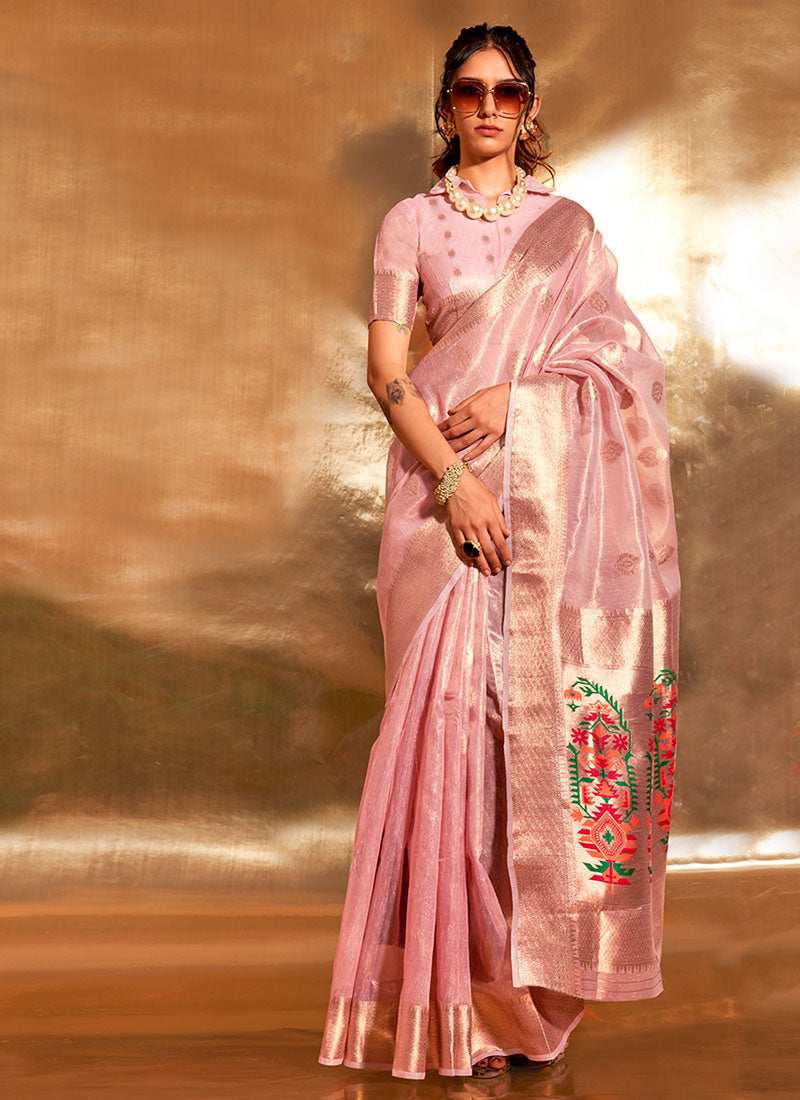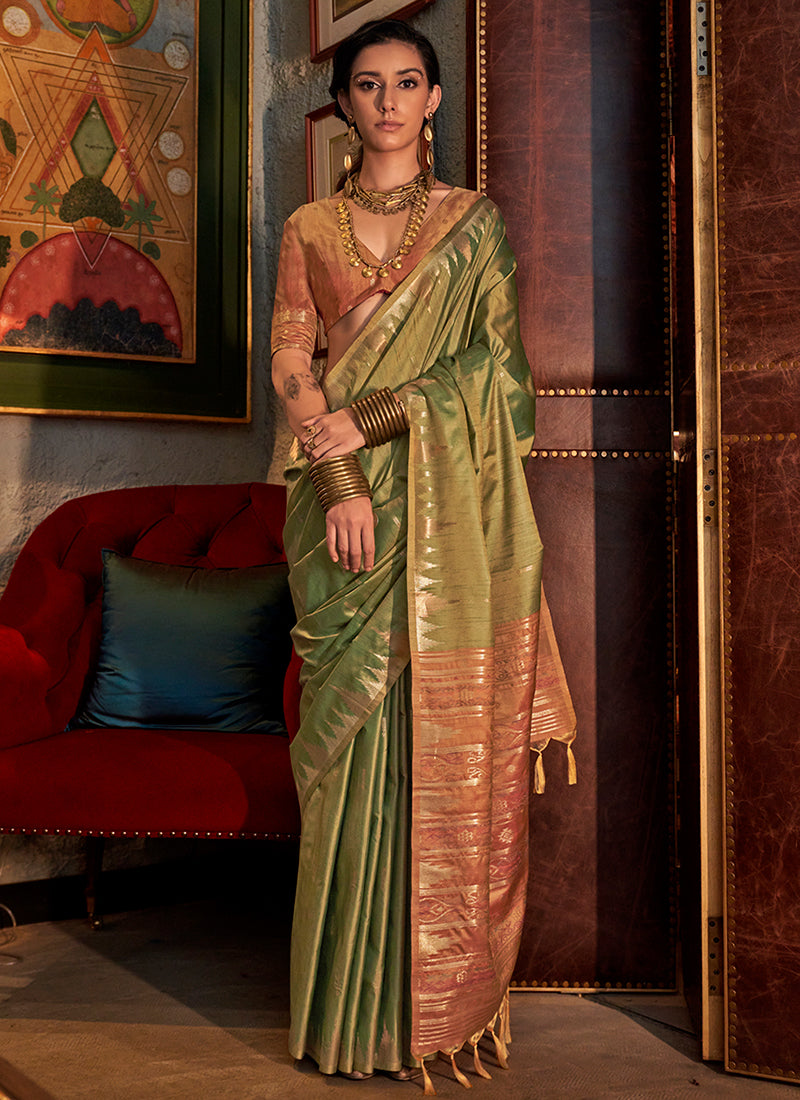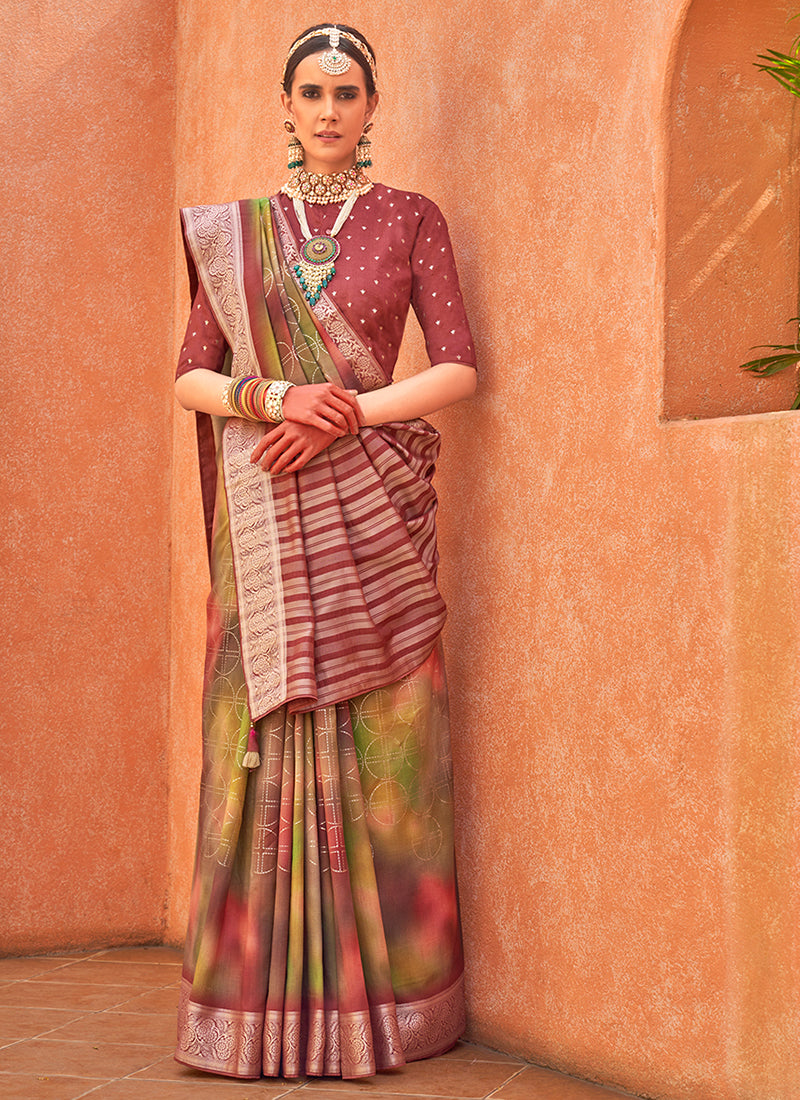Your wedding day is one of the most important and memorable days of your life. Every detail counts, from the venue to the flowers, but one of the most significant aspects of the day is your attire. Among the many clothing options, the saree remains a timeless choice for brides, representing elegance, tradition, and beauty. Choosing the perfect saree for your wedding can be both exciting and overwhelming, given the variety of styles, fabrics, and designs available. Here’s a guide to help you find the saree that is just right for your wedding.
1. Understand the Theme and Tone of Your Wedding
Before you even begin browsing through saree collections, it’s essential to understand the tone and theme of your wedding. Is your wedding going to be a traditional affair, or are you opting for a contemporary, fusion approach? The color, fabric, and design of your saree should complement the overall theme. For instance:
-
Traditional Weddings: If you’re having a classical, cultural wedding with rituals and customs, a saree in rich fabrics like silk or brocade, with intricate embroidery or zari work, would be ideal.
-
Destination or Fusion Weddings: For a more relaxed or fusion wedding, a light, airy saree in fabrics like chiffon, georgette, or organza, in pastel or soft shades, might be a better choice.
2. Pick the Right Fabric for Comfort and Style
Sarees come in various fabrics, each with its distinct texture and draping style. Your choice of fabric will not only affect how the saree looks but also how comfortable you feel throughout the day.
-
Kanjivaram Silk: Known for its grandeur and richness, Kanjivaram silk sarees are a popular choice for South Indian brides. These sarees feature heavy zari work and often have vibrant colors like red, gold, and green.
-
Banarasi Silk: If you're aiming for royal opulence, a Banarasi silk saree, with its intricate patterns and golden motifs, could be perfect for you.
-
Chiffon or Georgette: These light, flowing fabrics are perfect for a more contemporary look. They are easy to drape and move with you, providing comfort without sacrificing style.
-
Linen or Cotton: If your wedding is in a warmer climate or you prefer something breathable, cotton or linen sarees can offer a light and airy look while still maintaining elegance.
3. Choose a Color That Complements Your Skin Tone
The color of your wedding saree plays a major role in enhancing your overall bridal look. Traditional bridal sarees often feature shades of red, maroon, or gold, but today’s brides have a wide array of colors to choose from. Here’s how to select the perfect color for your skin tone:
-
Fair Skin: If you have a lighter complexion, colors like red, royal blue, lavender, or pastel shades like peach and blush pink will make you look radiant.
-
Medium to Olive Skin: Brides with medium or olive skin tones look stunning in shades of deep red, burgundy, emerald green, and gold, as well as jewel tones like sapphire and royal purple.
-
Dark Skin: Dark-skinned brides can rock vibrant colors such as royal blue, deep magenta, bright yellow, and shades of orange. Gold zari work contrasts beautifully against dark skin tones.
If you're not a fan of traditional bridal reds, pastel and neutral colors like ivory, champagne, or soft pink are also growing in popularity for a more modern look.
4. Consider the Bridal Look You Want to Achieve
Sarees offer a wide range of styles and designs to suit different bridal looks. Whether you want to look regal, contemporary, or minimalist, there’s a saree design that will complement your vision.
-
Classic Bridal Look: Opt for a heavily embellished saree with zari, resham embroidery, or stonework. This classic, intricate design often features gold or silver accents, paired with traditional jewelry to complete the look.
-
Modern and Minimalist: If you prefer simplicity, go for a minimalist saree with clean lines, less embellishment, and a soft color palette. A plain saree with subtle embroidery along the borders or a light, self-design fabric can create an understated yet elegant look.
-
Statement Saree: Some brides prefer to make a bold statement with their wedding outfit. This could include a saree with unconventional elements like contemporary motifs, floral designs, or a saree that integrates different fabrics. You might also consider a lehenga saree, which combines the ease of a saree with the look of a lehenga choli, making it ideal for brides who want something unique.
5. Consider the Drape Style
The way you drape the saree can also impact the overall look. The most traditional drape, the Nivi drape, is widely used, but there are many other styles depending on your cultural preferences.
-
Maharashtrian Drape: In this style, the saree is worn with the pleats in the front and the pallu draped over the shoulder. This drape is often paired with a navwari (nine-yard) saree.
-
Gujarati Drape: The Gujarati style involves pleating the saree in the front and then tucking the pallu in the back, allowing it to flow over one shoulder.
-
Bengali Drape: The Bengali style saree draping involves making pleats at the front and bringing the pallu from the back around the shoulder and across the front.
Whatever style you choose, make sure you practice the drape before your wedding day to ensure you are comfortable and confident in it.
6. Accessorize Wisely
Your saree is just one element of your bridal ensemble. To complete the look, consider the right accessories:
-
Jewelry: Traditional bridal jewelry, like a heavy necklace set, maang tikka (headpiece), and bangles, will complement the richness of your saree. Brides today are also experimenting with contemporary jewelry like pearl strings, diamond pieces, or even statement earrings.
-
Footwear: Choose footwear that is both stylish and comfortable, as you may be standing for long hours. Bridal juttis or traditional embroidered sandals are popular choices, as they blend well with most saree styles.
-
Dupatta or Shawl: Many brides also choose to wear a dupatta or shawl over their saree for additional warmth, especially if it's a winter wedding. The dupatta can add a regal touch, especially if it's made from net or chiffon and adorned with light embroidery or beadwork.
7. Plan Ahead for Fitting and Final Adjustments
Once you’ve chosen your saree, it’s crucial to ensure it fits well. A saree needs to be tailored to your body so that it drapes perfectly. Make sure you work with an experienced tailor who can adjust the length and pleats to suit your body type. If your saree has a pre-stitched border or is a ready-made style, these details should still be double-checked for a perfect fit.
Conclusion
The perfect wedding saree is a reflection of your personal style, culture, and the atmosphere you want to create on your big day. Whether you choose a traditional silk saree with intricate zari work or a modern chiffon number with a minimalist design, the key is to select a saree that makes you feel confident, beautiful, and comfortable. From color and fabric to the final drape and accessories, every detail contributes to the ultimate bridal look. Take your time, explore different options, and enjoy the process—after all, your wedding saree will remain a treasured part of your memories for years to come.













